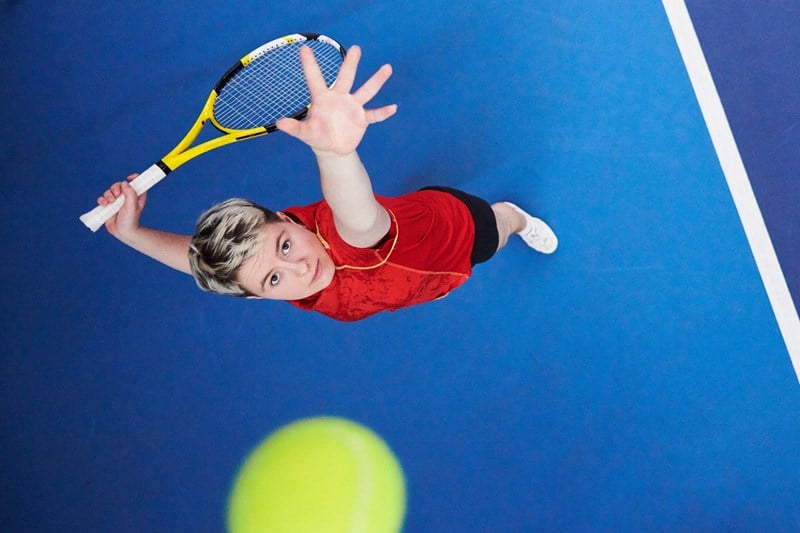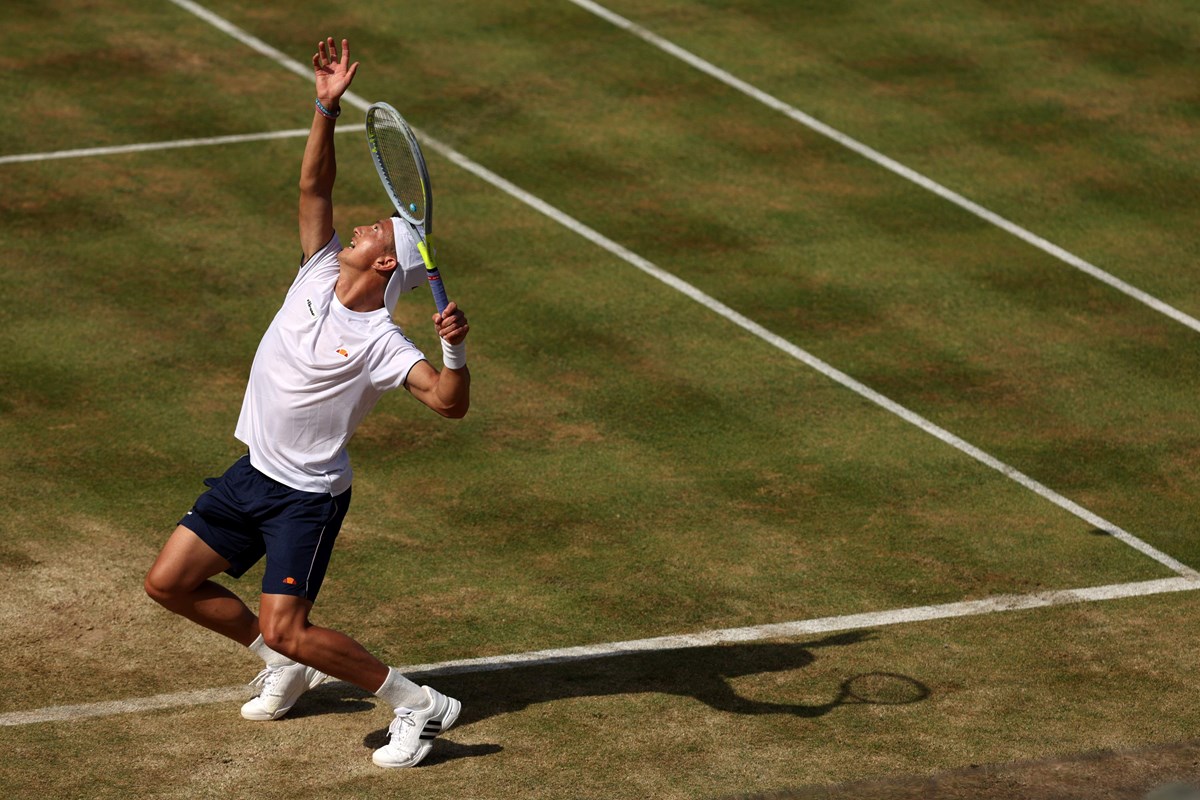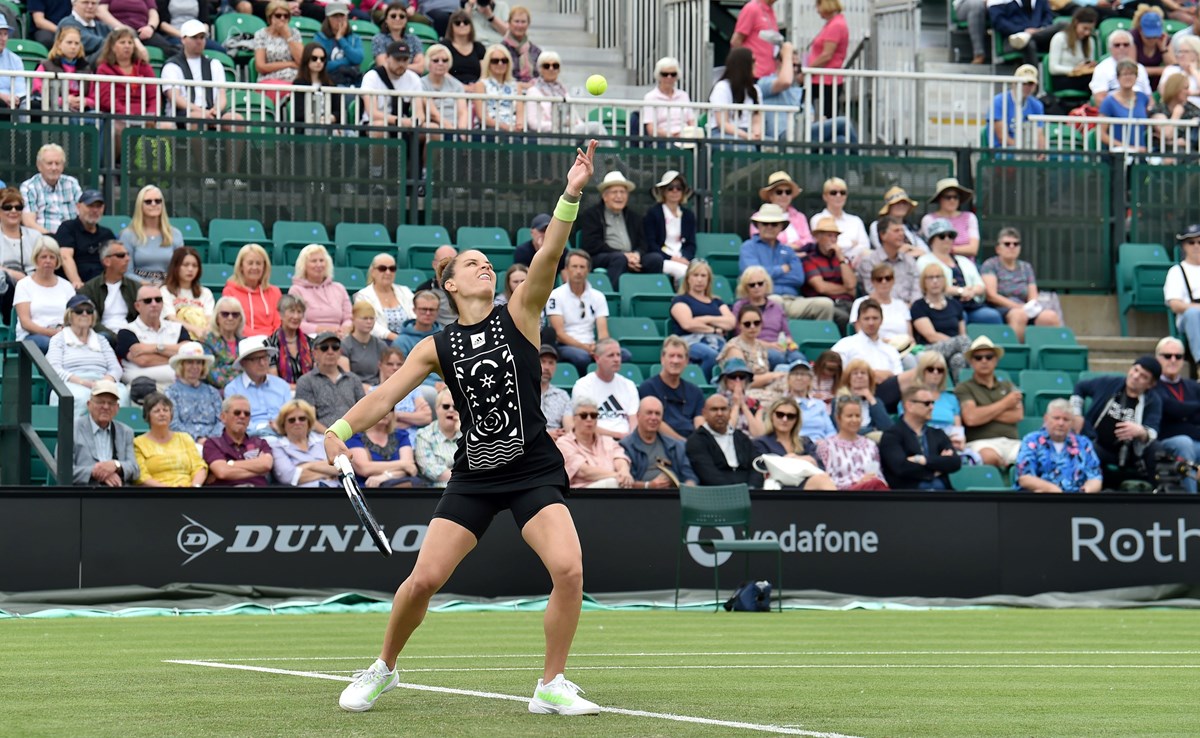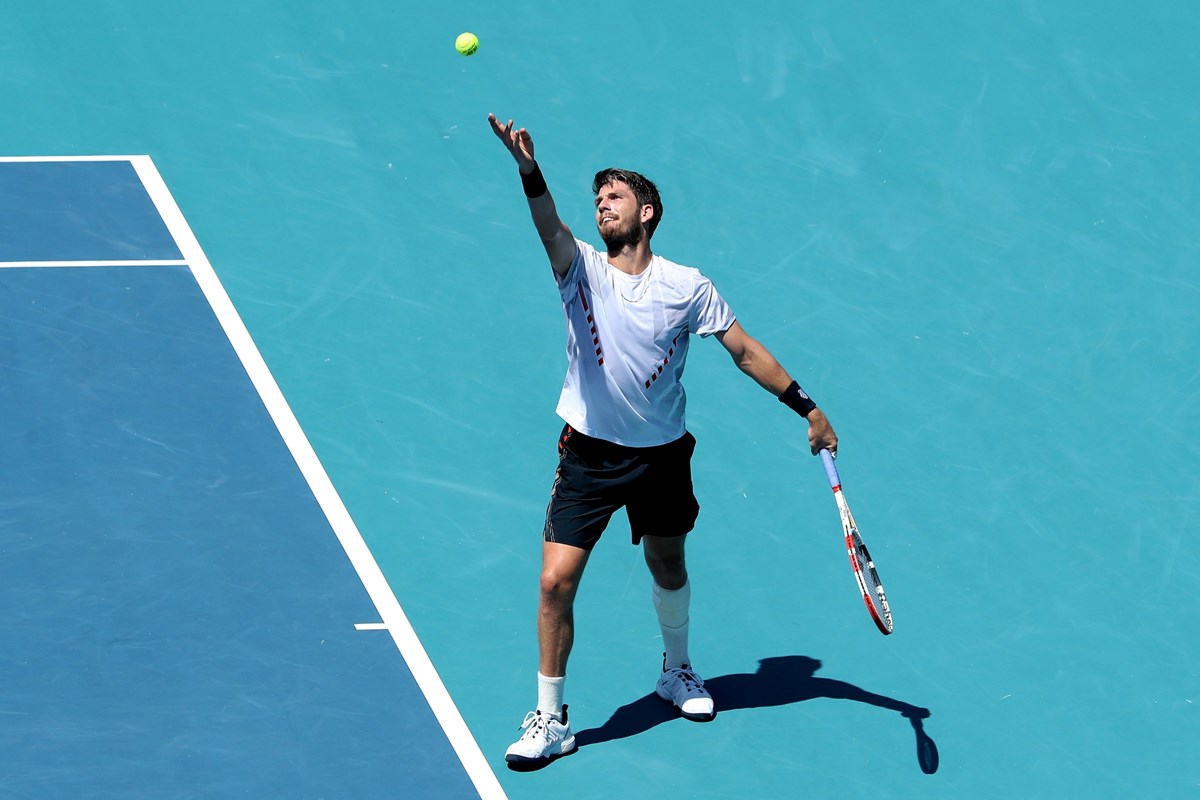How to practise your serve without a partner

Whether you have a partner or not, there’s always an opportunity to improve your skills and where better to start than with the serve.
LTA expert coach Matt Smith explains three serving drills you can practise on court by yourself – using a racket, some tennis balls and a marker – whatever your level.
Beginner - Get your movement right
Serving is just like throwing. When you throw a ball, it uses a similar action and involves the same muscle groups – from the weight transfer in your legs to your arm motion in throwing the ball.
When you’re first starting out and trying to improve your service technique, practicing an overarm throw with your dominant hand is a great place to start – particularly, the ‘double-throw’.
First, grab two tennis balls, one in each hand, and stand in the ‘tick’ or ‘trophy’ position as if you’re about to hit a serve. Use your non-dominant arm to throw a ball above your head (practising your ball toss) and with your other arm, throw the ball overarm into the diagonal service box (just like hitting a serve).
Once you feel comfortable with both actions it's time to grab a racket and start practicing. Staying in the same position and using the same motion, try serving into the diagonal service box.

Have a go at 10 serves on both sides and think about placing your ball toss just in front of you and slightly over to your hitting arm to make it easier for you to hit. Try to aim for 80% or 16/20 to track your consistency.
Tip: If you want to take your overarm throw one step further, try to develop this into a full-service motion to generate some rhythm. Think about both arms down together, splitting near the front leg, and then both up together into your throwing position, a bit like a pendulum (you can also practise this in front of the mirror without any equipment at home).
Intermediate - Pick your spot
Once you’re feeling confident of getting your serve to land in the diagonal service box, you can start thinking about where you want to place your serve – to your opponent’s forehand or backhand – and ideally their weaker side, if you know this.
To get the direction you want on your serve you need to think about where your racket is facing. The ball will go wherever your strings are facing at the point of contact – so think about the angle of the racket at the point when you hit the ball (known as the ‘contact point’).

To practise, find some cones, water bottles, or whatever you have to hand, and use them to divide the service box in half.
Then, grab your tennis balls ready to serve. Before you hit each serve, call out which side of the service box you’re aiming for. Try 10 serves and aim to get at least half of them into the side you’re aiming for.
Tip: To keep developing in the future, try practising this drill using the continental grip on your serve (just like the pros). To get this grip, pretend that you’re shaking hands with the racket handle, ensuring that there’s a nice ‘V’ shape between your thumb and index finger down the edge of the grip.
Advanced - Change of pace
Time to take things to the next level – now we’re going to look at controlling the speed and spin of the ball when you serve.
This will be useful when differentiating between going from the first to the second serve. With your first serve you want to take time away from your opponent by increasing the speed, whereas on the second you’re looking for more consistency and greater spin.
First serve
Let’s start with the first serve. For this drill, stand up at the service line on your side of the court – this takes away the net as a barrier for now.
Then, using your continental grip, try hitting your serve with the strings flat to the ball and snapping the racket into the court to generate speed (called ‘pronation’). Again, try at least 10 serves and try to change up the direction as well. 60% or higher is a good level of consistency for a first serve.
You can then progress this back towards the baseline.

Second serve
Now moving on to the second serve, we’re going to practise different types of spin to increase consistency and make it awkward for your opponent in a match.
At the baseline and in your serving position (or back on the service line if desired), we’re going to practice hitting your serve with both slice and also topspin.
Slice – the aim here is to cut across the ball as you serve. When you’re serving, only open your racket face slightly and hit across the side of the ball to make it bend to either the left or right (depending on your dominant hand). Great for wide serves on your dominant side of the court.
Top spin – the aim here is to increase the bounce of ball on your opponent’s side of the court (a ‘kick’ serve). With an open racket face, try to brush the strings up the back of the ball to give it that extra jump.
As the second serve is all about consistency, try 10 serves with both spins and aim to get at least eight landing in the service box.
Top tip: Practising different spins can give your game an extra layer of unpredictability. It’s worth trying to add a bit of pace to your spin serves as well so you can change things up in match and catch your opponent off guard.
Book a coaching course
Want to take your serve to the next level? Find and book a coaching course near you and improve your skills with the help of an LTA Accredited coach.
